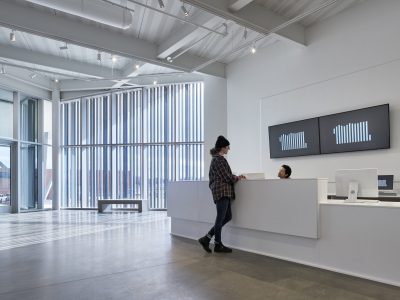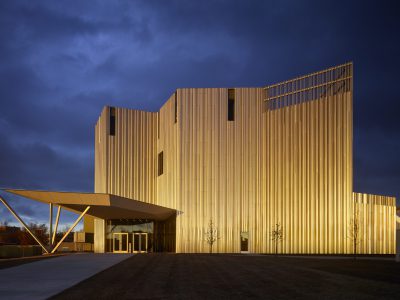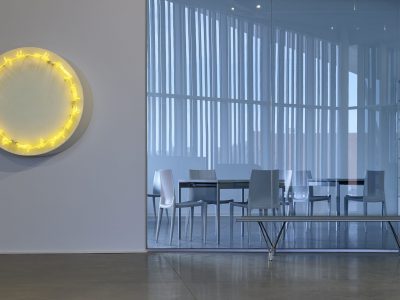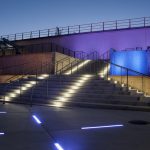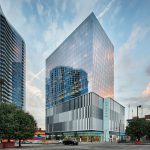Folding Light Wins ACEC Honor Award
This past year has brought in its fair share of trials and tribulations. However, through the fog one thing is certain, a bright “light” was brought to Oklahoma City in 2020. We are honored to share that “Folding Light” was awarded the 2021 American Council of Engineering Companies (ACEC) Nebraska Honor Award.
A Beacon of Light
Folding Light, architect Rand Elliott’s vision for the Oklahoma Contemporary Arts Center, provides the Oklahoma City community with a new home for artistic expression. Perhaps the most notable is how the building skin reflects the color of the sky throughout the day, including shades of orange in the morning, blues during the day, and reds at sunset. To maintain the impact, the aluminum fins that encase the building envelope reach high enough to completely conceal the mechanical systems located on the roof.
At night, Folding Light’s exposed spire outside the building envelope becomes a “lantern” for the surrounding area. In order to create this effect, Alvine Engineering designed three lights, one for each corner, that run the length of the spire. When lit, the lights complement the folding light design, creating an effect as envisioned in the architect’s original rendering. To keep the lantern from becoming too overwhelming, the luminaries are dimmable and honeycomb louvers and anti-glare shields minimize discomfort and disability glare. In addition, outdoor luminaries, including those in the parking lot and building entries, are Dark-Sky Approved, reducing light pollution.
The lighting design team provided many creative solutions in the galleries, as well. Over 200 light switches in the ceiling allow gallery staff the flexibility in beam and dimming needed to adapt to each exhibition without stretching the budget. After a full-scale lighting mockup meeting with the architect, owner, and Alvine team, LED lighting was chosen for the entire building to not only save energy, but protect artwork against potentially damaging infrared light. The flexible theater space includes a 100% LED theatrical lighting system. The efficiency of the LED lights not only provided a direct savings by reducing energy consumption when compared to traditional halogen theatrical lights, but indirect cost and energy savings, as well. The reduction in energy consumption allowed the Alvine team to reduce the capacity of the building’s electrical distribution system and reduce the HVAC design due to less heat being introduced to the room from the lights.
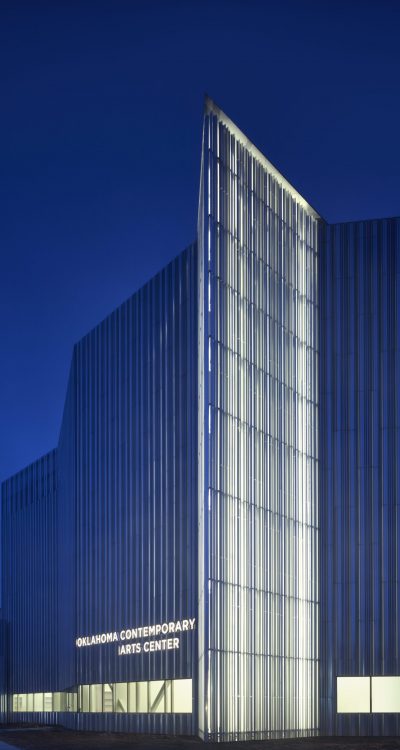
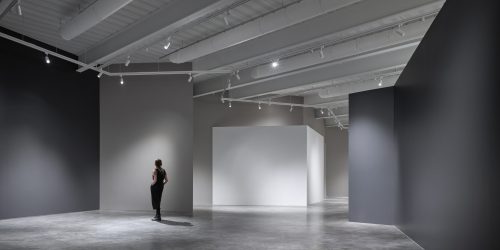
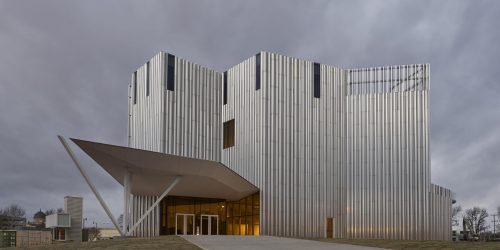
Complexity
No two floors within Folding Light are the same and right angles are virtually nonexistent within public spaces. In order to blend in with and reinforce the angular design elements, the track lighting was custom cut to create unique mitered joints. The architectural design also called for exposed beams, but did not want visitors to see electrical conduits when walking into a room. Therefore, the Alvine team came up with solutions such as embedding the conduits in concrete in order to hide them from view and leveraging wireless controls to minimize the electrical infrastructure requirements.
The art galleries and storage areas added another level of complexity because of the strict relative humidity and temperature control needed to preserve various types of exhibits. By keeping the temperature and humidity within a very tight range, these spaces can feature a wide variety of exhibits: from paintings to sculpture to woodwork. The mechanical system maintains the appropriate environment by utilizing variable speed compressors, return air bypass, hot gas reheat, digital controls specific for this type of environment, and active humidification – all while meeting the project budget. In addition, Alvine Engineering designed a fabric duct air distribution system to better distribute the air while meeting the architectural aesthetic. In the end, Alvine Engineering’s design is able to maintain the precise temperature and relative humidity requirements with limited fluctuations regardless of the outdoor conditions.
Concealed Design
All but a few of the spaces within Folding Light do not have ceilings, leaving the building systems exposed as part of the architectural design. While visitors can look up at these systems and equipment, such as the ductwork and fire sprinklers, special care was taken to integrate these systems into the architect’s vision for the spaces. Classrooms are among the spaces where the mechanical systems are viewable, perhaps inspiring a future engineering student.
At the same time, what visitors cannot see also encourages today’s engineers to challenge themselves in what is possible when it comes to locating and concealing systems. By working closely with the architect, the Alvine team was able to arrange certain exposed systems to add to the architect’s design and hide those systems that took away from the design.
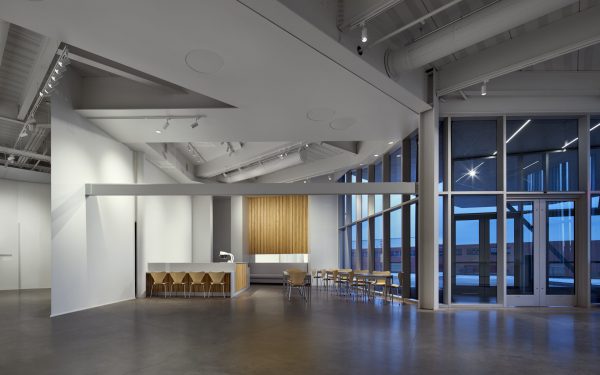
Design Team
Alvine Engineering was honored to partner with architect, Rand Elliott Architects, structural engineer, Wallace Engineering, general contractor, Smith and Pickel Construction, and mechanical contractor, United Mechanical, on this state-of-the-art project. For more information on the project and the full list of the award winners, check out the Omaha World Herald’s 2021 ACEC Nebraska Engineering Excellence Awards issue.
